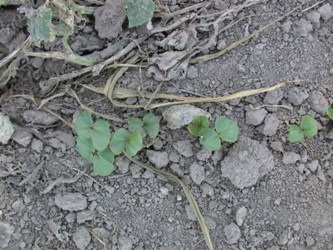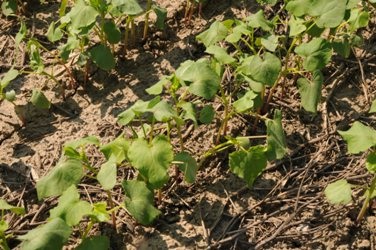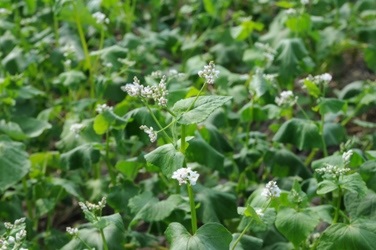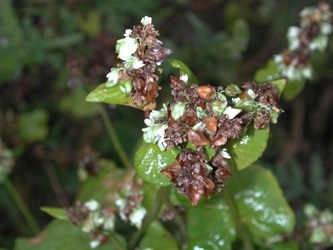Cover crops: buckwheat
Information on the benefits and growth habits of buckwheat planted as a cover crop.
Description
Family
- Polygonaceae (smartweed)
- broadleaf
- summer annual
Cover crop use
- after early harvested crops
- as a weed suppressant/smother crop
- as a pollen source
Growth habits
Germination
- germinates at a soil temperature of 7.0° C or higher
- emergence usually 3 to 5 days after planting
Top growth
- fastest growing cover crop
- flowers in 4 to 6 weeks and sets seed in 10 to 12 weeks
- there can be mature seeds on plants that are still flowering
- single-stem with height of 30 to 150 cm, usually 45 to 75 cm in 6 weeks
Root system
- fibrous root system, moderately aggressive
- concentrated in top 25 cm
- root biomass is much less than cereals
Overwintering
- very cold sensitive
- easily killed by frost
Site suitability
- wide range of soil types
- prefers well-drained soils with a pH range of 5.0 to 7.0
- performs well on infertile soils
- intolerant of droughty, saturated or compacted soils
Control options
- do not let buckwheat go to seed — there's a fine line between attaining maximum biomass and allowing the crop to go to seed
- for best results — kill buckwheat within 7 to 10 days of flowering — before the seed matures
- volunteer buckwheat can be controlled by several broadleaf herbicides containing triazine, sulfonylurea and trifluralin.
Sensitivity to herbicides
- seedlings have been damaged from residues from herbicides containing triazine, sulfonylurea, and trifluralin
Weed control
- A good stand of buckwheat can usually compete well with most weed species
- Volunteer buckwheat can be controlled by several broadleaf herbicides, depending on the crop being grown
- There are no herbicides registered to control broadleaf weeds in buckwheat but some can be used to control some grass weeds in this crop
Benefits and cautions
Nutrient management
- effective at extracting phosphorus from the soil — used by organic farmers for this purpose
Pest management
- smothers annuals, suppresses and shades perennial weeds
- attracts beneficial insects
- honeybees are attracted
- attract Lygus bugs and tarnished plant bugs
- should not be used in a field with history of root lesion nematode
- prone to white mold and Rhizoctonia
Organic matter
- not a big biomass producer, especially if planted late summer
- easily decomposable residue
Erosion control
- rapid growth and umbrella like leaf structure, means fast ground cover
Getting started
Establishment
- plant buckwheat in the spring after all risk of frost is past or late summer at least 4 weeks before the usual frost date
- seeding rate of 50 to 60 kg/ha — use higher rates if broadcasting
- drilling is a better option — results in even placement and solid stands
- can be killed by early frost
Seed cost and availability
- moderate planting expense
- if not available locally, usually can be ordered in
Cover crop management
- monitor buckwheat carefully to prevent seedset
Updated: May 28, 2024
Published: September 19, 2022



